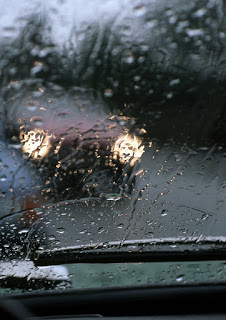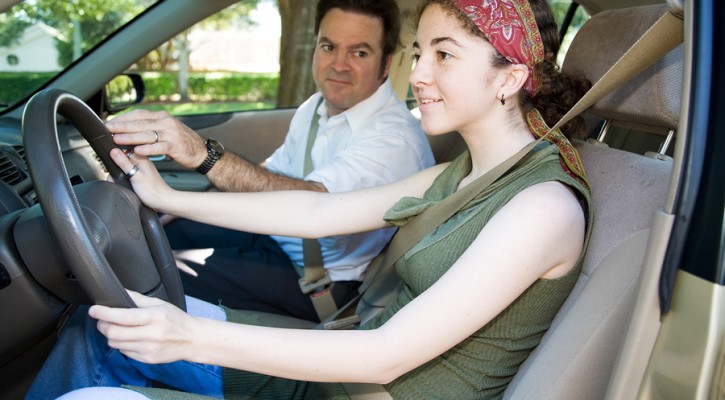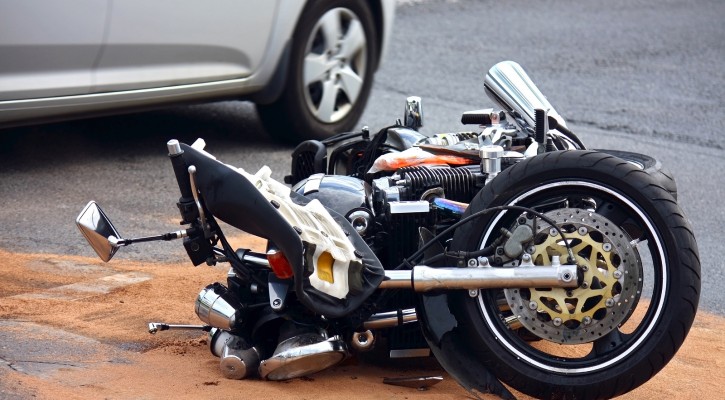Tag Archive: driving tips

Tips for Drivers when it comes to driving in the Rain and Sleet
January 7, 2010
Whether you’re a new driver or a veteran, the roads we drive on can hold a range of different secrets that even the most experienced of us fail to spot. Driving in rain and sleet can sometimes be a very daunting experience, and we each handle it in many different ways, some of us embrace the challenge, whereas others clam up and find themselves driving to the office at a snails pace in fear. But there are a few things you can do in order to ensure that you are driving safely and sensible, without causing traffic or accidents!
The main way to drive safely in the winter months is to understand the different road conditions and the impact they each have on your car and driving. Whether it’s raining, hailing or heavily snowing, the conditions on the road will be greatly affected as opposed to dry weather. Traction for braking and accelerating is severely reduced, sometimes up to 1/8th of their usual capacity, often making breaking time longer when it comes to stopping. Visibility can often be a key factor, as snow and heavy rain can decrease what you can see.
One aspect that few people realize is that heavy rains can cause windows to fog up fast, so the best way to conquer this is to de-fog as soon as u get in the car, leave the heat on but on a low fan setting, and open your window ever so slightly to keep fresh air flowing, this help keep your windows from fogging when your driving in particularly rainy, or even snowy weather. Always keep an eye on your windows, if they begin to fog then de-fog immediately to ensure optimum visibility when driving in these conditions.
Another is speed; it may sound obvious but slow down when you’re driving in bad weather. Because roads that are wet and snowy require good vehicle control, reducing your speed where you feel comfortable can give you the best control over your vehicle; you don’t have to dip drastically under the suggested speed limit, just drop just below and you’ll find that should suffice. You won’t be the only one either, the limits you will find on the roads are based on ideal weather, so dropped just below will mean it should suit the road perfectly.
This is also a warning for those of you who drive at high speeds regardless of the weather. It is ill-advised that you tail-gate in bad weather, especially if a driver is doing just under the speed limit, doing this is not only intimidating, but it’s also very dangerous in wet and sludgy weather. If the driver in front were to slow down or stop suddenly, there is no guarantee you will be able to stop in time on roads that have reduced traction, so always drop back, be patient and be safe.
When driving, accelerate gradually, brake gradually, and turn slowly and carefully. Sudden actions on wet or slush filled roads can cause a sudden loss of traction that can cause you to loose complete control of your vehicle and cause an accident. Sharp bends demand caution on dry roads, they demand even more caution in bad conditions, so always be gentle and careful when driving. A great tip is to try and keep your foot off the accelerator where possible when driving on overpasses or under bridges. These types of roads can often hide shady spots of ice or sleet, which can cause you to spin out if you accelerate over it too quickly without thinking.
Try to avoid using cruise control in bad weather, especially snowy, icy or rainy conditions, in order to ensure your safety, you need to resist the temptation and manually control your car, in order to ensure that you always have control over your vehicle and the acceleration.
Also, do your best to look out for other drivers by clearing all the snow off your car, when you’re driving along, snow could be blown off your car and straight smack into the car behind you, this has often caused people to loose visibility, and the shock of the sound can often cause people to loose control in fear. Similarly, if you come across someone in front of you with snow on their car, try and stay back, you wouldn’t believe how fast snow hurtles towards you, it can be a lot scarier than you think, as silly as it sounds, so always look out for your fellow drivers, and yourself.
Always be careful when driving in the rain and sleet, never forget your headlights, and always remember to brake earlier to give yourself time to come to a stop. By following these tips, you’ll be driving in bad weather safely and securely for years to come.

Tips for Saving Gasoline while Driving
December 4, 2009
How many of you have ever been driving along, and taken a glance at your fuel gauge, have you ever been absolutely astounded at the lack of gas there is there? Despite the fact you only filled up last week.
With the cost of fuel rising rapidly, we all want to live more frugally in order to save extra cash for gas. But few people realize that there are a few simple ways that you could make your gas last a lot longer, meaning you end up spending less money on gas because you’re filling up a lot less frequently! And of course, these tips can help you save your environment too, which we should all be trying to do!
First of all, it’s important you look after your car, it sounds silly but having an unmaintained vehicle chugging about the place is not only bad for your wallet, but for your gas meter and the environment too! Always check your oil, air filters, and all other standard maintenance checks, by doing this it can actually make your vehicle a lot more fuel-efficient.
Make sure that all your tires are properly inflated. Statistics dictate that having your tires inflated at the correct level can actually make a difference to your gas levels, and of course as well as this, it’s a whole lot safer than having them too pumped up or too flat, and it ensures that your tires last.
One big gas waster has to be stopping and starting in rush hour traffic, so the simplest solution to this is to just avoid it completely! Leave late, or leave early, whichever is easiest, but it’s becoming more and more well know that traffic jams are one of the biggest ways to waste gas!
Alternatively, if you can work from home a couple of days a week, give it a go! Not only will it be a really nice change to day-to-day work life, but it can save you a ton in gas because you’re reducing how much you use your car. This way is also a lot kinder to the environment than driving daily.
Remove all excess, unnecessary weight. Lots of us drive around with all sorts of junk in our cars, but why? Little do we know that driving with excess weight in our cars can drag the car, meaning it will require more fuel, so it’s best to get rid of all that stuff that’s too heavy, it’s been cluttering your car anyway!
Always try to buy gasoline during the coolest times of the day. It sounds silly, but it’s actually quite intelligent. By buying gas either early in the morning or late evening means you’ll be getting gas in its densest form. When gas is warmer, it expands, meaning that when you fill up mid day in the summer, you might get a lot less than you’re paying for.
Why not try carpooling? It’s often not hard to find people who live in the same area as you and work with you, or near your place of work. By carpooling a few times a week, and switching around who takes who, you could end up saving yourself a lot of gas and money, and so could all of your colleagues!
And finally, wherever you can, try walking or cycling to your destinations, it sounds silly, but if ever you can afford to walk or cycle somewhere instead of driving, then go for it! You’ll be saving yourself gas and money, and you’ll also be saving the environment too! So try these tips and you might find yourself with more money in your pocket, and more gas in your tank!
Driver Education: How Cough Medicine Affects Driving
July 16, 2009
Many parents who warn their teens repeatedly not to use illegal drugs are unaware of the temptation and risk posed by over-the-counter medications such as cough medicine. But cough medicine provides an inexpensive, easily accessible high to one out of 11 teens, according to the Partnership for a Drug-free America. And teens are often ignorant of or in denial about the risks posed by over-the-counter medicines which, they reason, are safe and legal. A 2008 Partnership Attitude Tracking Study indicated that only 45% of teens think taking cough medicine to get high is hazardous. Teens may not consider that though dextromethorphan (DXM) is safe to take in the recommended 15-to 30-milligram dose, they are likely to consume 360 milligrams or more in the effort to get high.
The effects of overdosing on DXM include:
- Confusion
- Impaired judgment
- Blurred vision
- Slurred speech
- Dizziness
- Nausea and vomiting
- Excessive sweating
- Loss of motor control
- Dissociative (out-of-body) sensations
- Paranoia
- Hallucinations
- Irregular heartbeat
- Loss of consciousness
- Seizures
- Brain damage
- Death
The situation becomes even more dangerous when teens abuse drugs they believe are safe and then get behind the wheel. To make matters worse, many teens who experiment with using cough medicine to get high do so when they are already under the influence of another drug, such as alcohol. This intensifies the effects, and, of course, makes driving riskier.
Information on how to abuse DXM is readily available on the internet and via teens’ friends, so parents must counteract it with information of their own – and with vigilance. Here are some tips for parents:
- Familiarize yourself with the basics of cough medicine abuse. Words to watch for (on your teen’s internet history) and listen for include Dex, DXM, Robo, Robo-ing, Robo- tripping, Skittles, Skittling, Syrup, Triple-C, and Tussin. DXM is found in syrups, lozenges, tablets, capsules, and gel caps labeled DM, cough suppressant, or tuss, or include the word “tuss” in the name.
- Include discussions about the risks of abusing over-the-counter drugs in your regular talks with your teen. Explain the difference between therapeutic dosages and overdosing, as well as the effects. Tell your teen that you want to know whenever they need to take any medication for any reason.
- Lock your medicine cabinet or keep medicines that contain DXM in a location that isn’t accessible to your teen. Keep track of how much medicine is in each container. Avoid buying multiples of medicines that contain DXM; doing so can be tempting to teens, and also makes it more difficult for you to keep track of the total amount of medicine in your household.
- Observe your teen, your teen’s bedroom and bathroom, and recreational areas carefully for medicinal smells and empty cough medicine containers.

Setting a Good Driving Example for Your Teen
February 20, 2009
Many parents hope that when they teach their teenagers how to drive, their children will do as they say, not as they do, when it comes to driving. But this hope may be unrealistic. Research indicates that children mimic their parents’ driving behaviors from as young as two years of age, so a parent’s bad driving habits may be deeply ingrained by the time training for a driver’s license begins. And teens are notoriously intolerant of what they view as hypocritical advice. When this is combined with over-confidence in their own abilities, your teen could develop bad driving habits early in the training process.
Before you begin teaching your teen to drive, it is a good idea to review and correct any poor driving habits you have developed over the years of driving. Remember that when your teen repeats these behaviors, s/he is doing so without the benefit of your years of driving experience and highly developed driving skills.
A good first step is to review your driving handbook. This will also assist you in knowing what important beginning driver training concepts to reinforce during lessons with your teen. As you review the handbook, make notes on the driving behaviors you need to change. For example, many drivers become lax about using the turn signal every time they change lanes, pull out from a parking space, enter or leave an expressway, or turn at intersections.
Lax driving behaviors are more likely to occur in familiar settings, so pay particular attention to your driving as you travel to and from work and school and on errands. Pretend that these routes are unfamiliar to you. How would you change your driving behavior? Take different routes to and from work, school and errands. Does your driving improve?
Third, begin training early by talking to your teen about your own driving behaviors. As you drive, point out potential hazards as you scan ahead. When you take action, explain what you are doing and why.
Teaching teens to drive should be a process, not an event. It’s important to realize that whether you intend to or not, you are teaching your child to drive every time you get behind the wheel with your child as a passenger.

Sharing the Road with Motorcycles
February 19, 2009
Motorcycles are less stable and less visible than cars, and they have high performance capabilities. For these and other reasons, motorcycles are more likely than cars to be in crashes. And when motorcycles crash, their riders lack the protection of an enclosed vehicle, so they’re more likely to be injured or killed. Per mile traveled, the number of deaths on motorcycles is about 26 times the number in cars. A rider who isn’t wearing a helmet is 40 percent more likely to suffer a fatal head injury, compared with a helmeted rider.
The actions of motorcyclists can affect motor vehicle operators in numerous ways. When you follow a motorcycle, remember that motorcycles have the ability of stopping much more quickly than other vehicles in emergencies. Following too closely endangers your life and that of the motorcyclist.
In addition to maintaining a safe following distance from motorcyclists in front of you, check your rearview mirror and be aware of motorcyclists following you. When a motorcyclist is following you, be especially careful not to make any sudden stops.
Weather and road conditions present greater problems to the motorcyclist than to the driver of a motor vehicle. A puddle may hide a hole that jolts your car; the same hidden hole can throw a motorcycle out of control. When it rains, reduced traction makes it difficult for a motorcyclist to balance. It is more difficult for the motorcyclist to stay in control on slippery roads. Wet or icy roads impair a motorcyclist’s ability to brake and maneuver. Wind gusts can move a motorcycle across an entire lane. Gravel roads decrease traction and may cause a rider to slow down or brake where a car would not. Allow extra space for motorcycles in all adverse conditions. Use extra care when you are following a motorcyclist that is crossing railroad tracks. Railroad tracks present a special problem for motorcyclists, because motorcycle tires can get caught in the grooves of the crossing, causing the rider to lose her or his balance.
When you are following a motorcycle that is carrying a passenger, use extra caution. Passengers change the way the motorcyclist should operate. A motorcyclist who is inexperienced in transporting a passenger may have extra difficulties with balancing and controlling the motorcycle.
Learn more about motorcycle safety and sharing the road with motorcycles.
